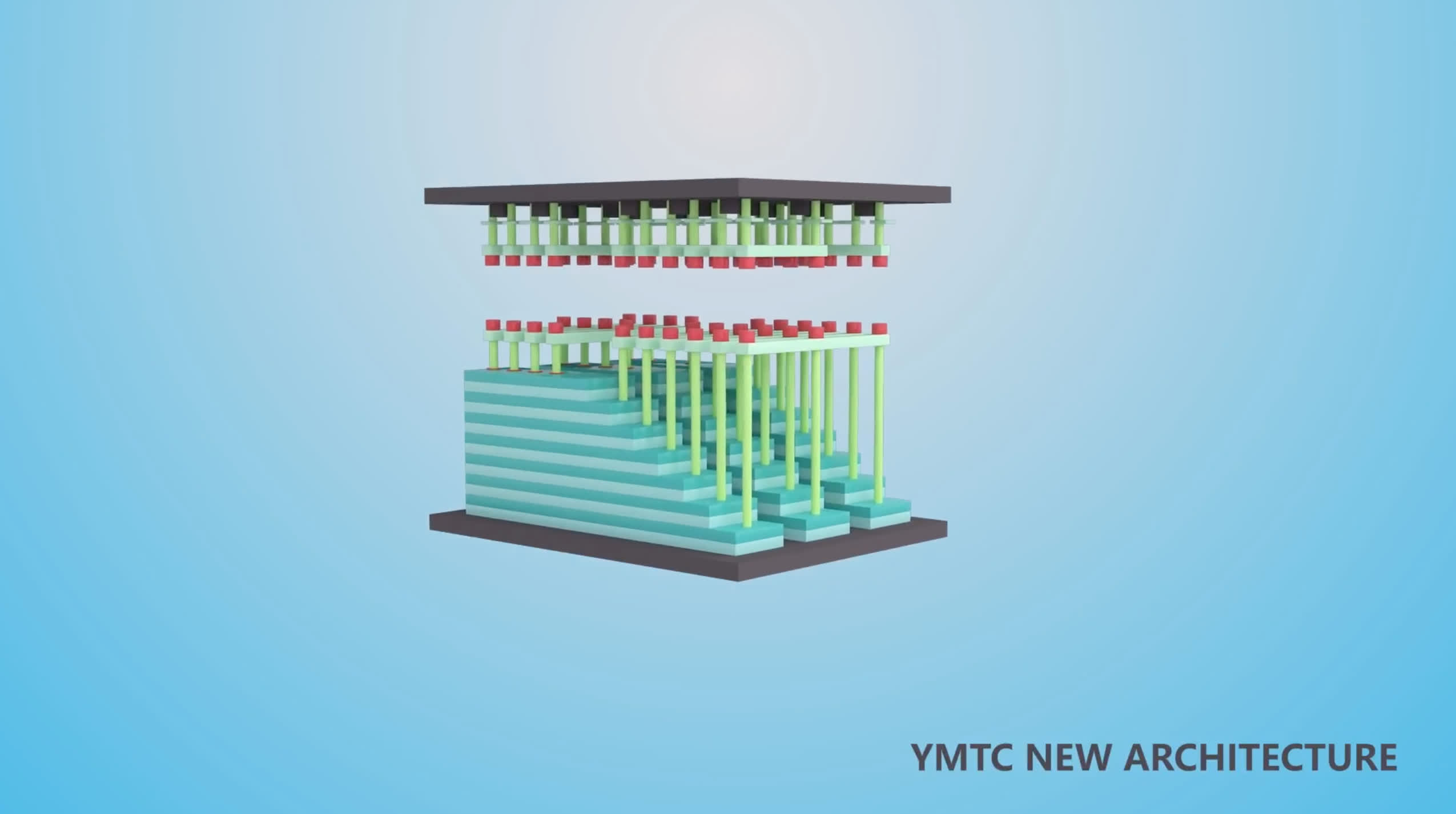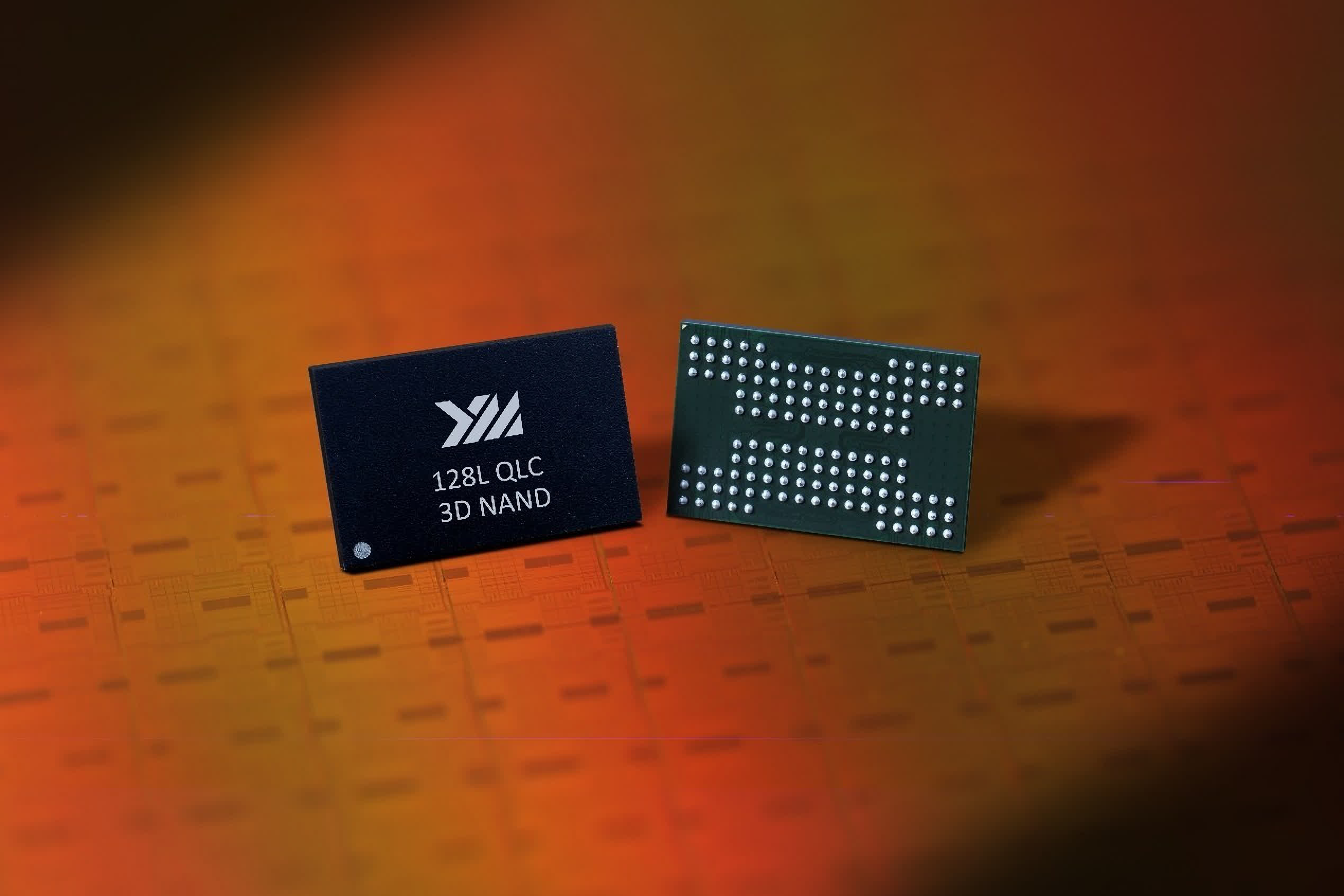China's YMTC has started mass production of 128-layer 3D NAND memory
Why it matters: Prc has been trying to bolster its semiconductor manufacture for years in an effort to become self-sufficient and more competitive on the global market. Evolution has been ho-hum on the CPU side of things, merely information technology looks like the country's NAND champion is quickly closing the gap on flash storage when compared to industry giants like Samsung, Micron, and SK Hynix.
Dorsum in July, Chinese media outlets reported that Yangtze Memory Technologies Co (YMTC) was getting prepare for mass manufacturing of 128-layer 3D NAND retentiveness, which is considered the summit of domestic flash memory development and key to addressing the loftier demand for consumer-grade solid-state storage in the region.
The Wuhan-based company may be China'southward NAND champion, only it'south a relatively small histrion in the one thousand scheme of things. For reference, Intel, Micron, Kioxia, Samsung, SK Hynix, and Western Digital account for a combined 97 percentage of the NAND market, so it won't be easy for YMTC to compete with these retention giants. Information technology also doesn't help that parent visitor Tsinghua Unigroup has been having fiscal difficulties and is currently looking for a generous cash infusion to stay afloat.

According to a report from Tech Insights, YMTC has indeed started mass-producing the new memory chips. The IP and tech intelligence house managed to take a closer look at Asgard'due south new AN4 i-terabyte SSD, which is based on the YMTC'southward 128-layer NAND. Although the Chinese company calls it "3D NAND," it should be noted that a more than accurate term would be ii.5D NAND, as information technology leverages Xstacking ii.0 hybrid bonding technology to essentially mucilage together two separate dies -- one for the TLC NAND array and another for the CMOS peripheral circuitry.
That said, the new SSD is no slouch, with sequential read speeds of upward to seven,500 megabytes per second and write speeds of upwards to 5,500 megabytes per 2nd. As you may take guessed, the Asgard is a PCIe 4.0 SSD, and these speeds are achieved over an x4 interface cheers to the InnoGrit IG5236 controller. This is the same controller used in the Plextor M10P SSD, and coupled with YMTC's 128-layer NAND, it can attain over 1.2 million IOPS in 4K read workloads and 900,000 in 4K write workloads.
| NAND Engineering science | YMTC 128L Xtacking | Samsung 128L V-NAND | Micron 128L CuA CTF | SK Hynix 128L 4D PUC |
|---|---|---|---|---|
| Device | Asgard AN4 1TB | Samsung EVO 870 1TB | Crucial BX500 480GB | SK Hynix Gilded P31 1TB |
| Chapters per dice | 512 Gb | 512 Gb | 512 Gb | 512 Gb |
| Dice size | 60.42 sq. mm | 74.09 sq. mm | 66.02 sq. mm | 63 sq. mm |
| Retention density | viii.48 Gb per sq. mm | half dozen.91 Gb per sq. mm | 7.76 Gb per sq. mm | 8.13 Gb per sq. mm |
It'due south also worth noting that YMTC's new 128-layer NAND memory has almost double the density of previous designs based on the initial version of its Xstacking tech. More chiefly, the 8.48 Gb per square millimeter in storage density is college than that achieved by Samsung, Micron, and SK Hynix using comparable 128-layer TLC NAND designs. These companies take largely moved on to more advanced designs, just it looks similar China is speedily closing the gap.

YMTC has also been working on a successor to Xstacking 2.0, which will allow the company to make high-capacity QLC 3D NAND retention with a chapters of 1.33 Tb per die. However, development on 128-layer QLC NAND has been boring, and the visitor says it has yet to achieve better yields needed for mass manufacturing of the new memory fries. In the meantime, YMTC is scrambling to increase production to 100,000 wafer starts per calendar month by the terminate of the year and is non affected by the recent free energy crunch in China.
Overall, this development is much more than impressive than what'southward been going on with x86 and Arm-based CPU development in the region. That said, Zhaoxin'south x86 processors are slowly creeping into consumer products, and Huawei's HiSilicon subsidiary has been quietly pushing its custom Arm-based Kunpeng silicon to both consumers and data eye clients. As for YMTC, information technology has an all-encompassing list of clients, mainly Chinese telephone makers and SSD manufacturers. With its new 128-layer NAND, the Wuhan-based chipmaker intends to assault the data center market in the most future.
Source: https://www.techspot.com/news/91454-china-ymtc-has-started-mass-production-128-layer.html
Posted by: corleywittentiou.blogspot.com


0 Response to "China's YMTC has started mass production of 128-layer 3D NAND memory"
Post a Comment